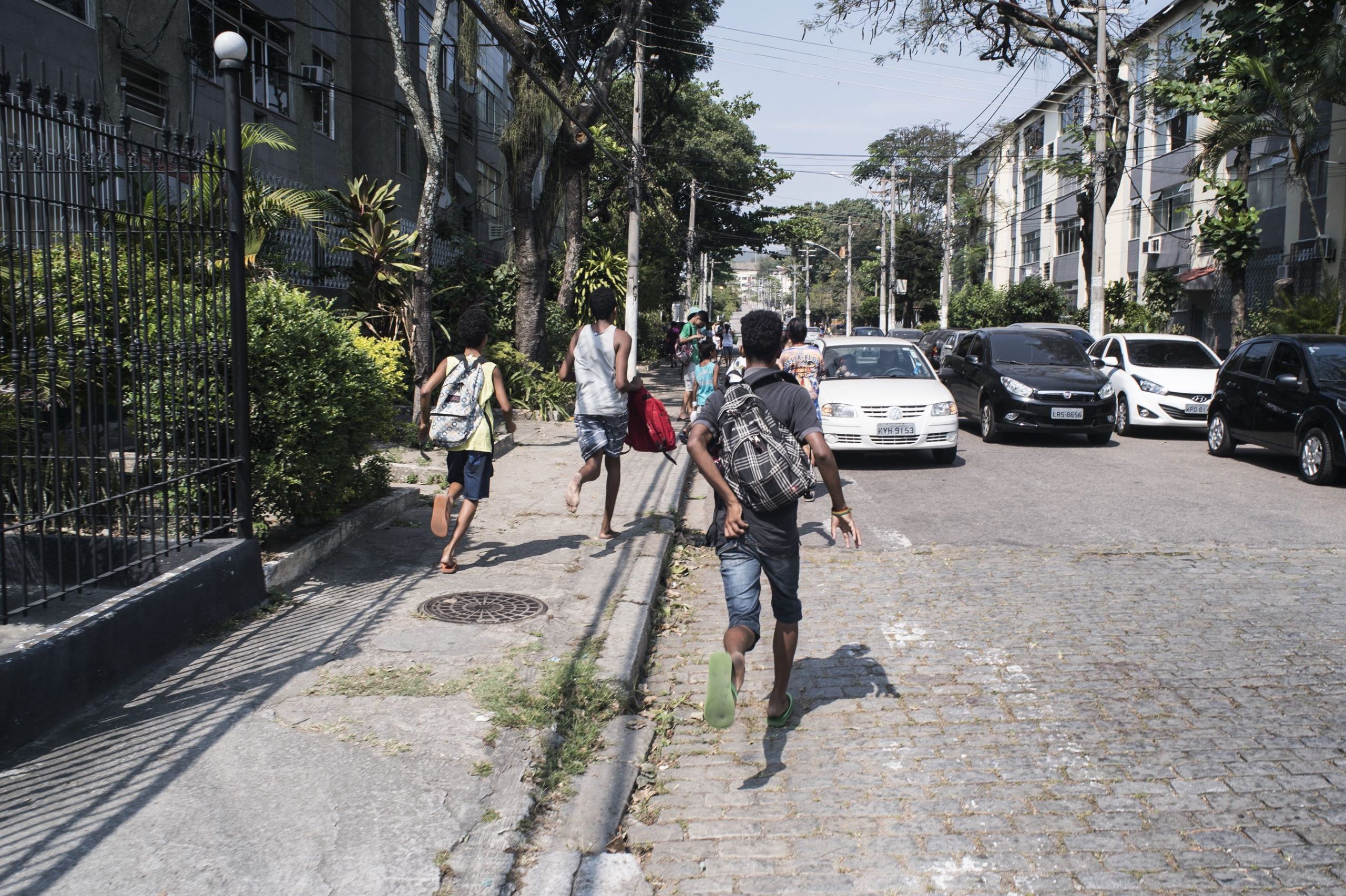Renata Menezes
is a professor in the Anthropology Department of the National Museum, Federal University of Rio de Janeiro (ufrj). D. (2004) and M.A. (1996) in Social Anthropology from the Graduate Program in Social Anthropology of the National Museum, ufrj (ppgas/mn/ufrj). Coordinator of the Laboratory of Anthropology of the Playful and the Sacred of the National Museum (Ludens). Researcher at the Conselho Nacional de Desenvolvimento Científico e Tecnológico - Conselho Nacional de Desenvolvimento Científico e Tecnológico.cnpq and Faperj's "Cientista do Nosso Estado". renata.menezes@mn.ufrj.br
Morena Freitas
is an anthropologist at the Superintendence of the Institute of National Historical and Artistic Heritage (Instituto del Patrimonio Histórico y Artístico Nacional (iphan) in Sergipe, Brazil. Researcher at the Laboratory of Anthropology of the Playful and the Sacred (Ludens/...).mn/ufrj). D. in Social Anthropology from the Federal University of Rio de Janeiro. morebmfreitas@gmail.com
Lucas Bártolo
D. student at the Graduate Program in Social Anthropology of the National Museum of the Federal University of Rio de Janeiro (ppgas/mn/ufrj), Brazil. Researcher at the Laboratory of Anthropology of the Playful and the Sacred (Ludens/...), Brazil.mn/ufrj). Master in Social Anthropology from the Federal University of Rio de Janeiro. bartolo.lucas@mn.ufrj.br

Virtual exhibition poster Sweet Saints: Devotions to Cosmas and Damian in Rio de Janeiro
Leear Martiniano, 2020
During the months of September and October, Cosme, Damien, Doum and the ibejadas circulate and are exhibited in religious stores.
Thiago Oliveira, 2015.
Since the beginning of September, the shop windows announce the arrival of the season of saints' sweets. Until October 25, the day of Crispim and Crispiniano, passing through October 12, Children's Day, a festive-religious calendar is established in the city of Rio de Janeiro around the celebration of childhood. In the religious articles stores, the images of Ibejadas, Cosme, Damião and Doum are the most sought after in this period, when the terreiros and churches are used to celebrate children.
Season of sweets in the markets
Thiago Oliveira, 2015.
The typical sweets of Cosme y Damián
Thiago Oliveira, 2015.
White candies, typical candies, sweet pots, traditional candies, industrialized candies, homemade candies... Welcome to the incredible world of candies! Coconut candy, sigh, paçocajujube, lollipop, milk candy, peanuts (pé de moleque) and pumpkin. Many of these sweets only appear on the shelves once a year, in September: they are the typical sweets of Cosme y Damián.
There are those who like to give more than just candy, mainly toys.
Thiago Oliveira, 2015.
In celebrations organized by a larger group of devotees - in the street or in neighborhood clubs - or by the community of a terreiroThe toys can be more special, such as bicycles and remote-controlled cars, and recreational activities and games are scheduled throughout the day. Distributions take on a charitable dimension when school supplies, food and clothing are also donated.
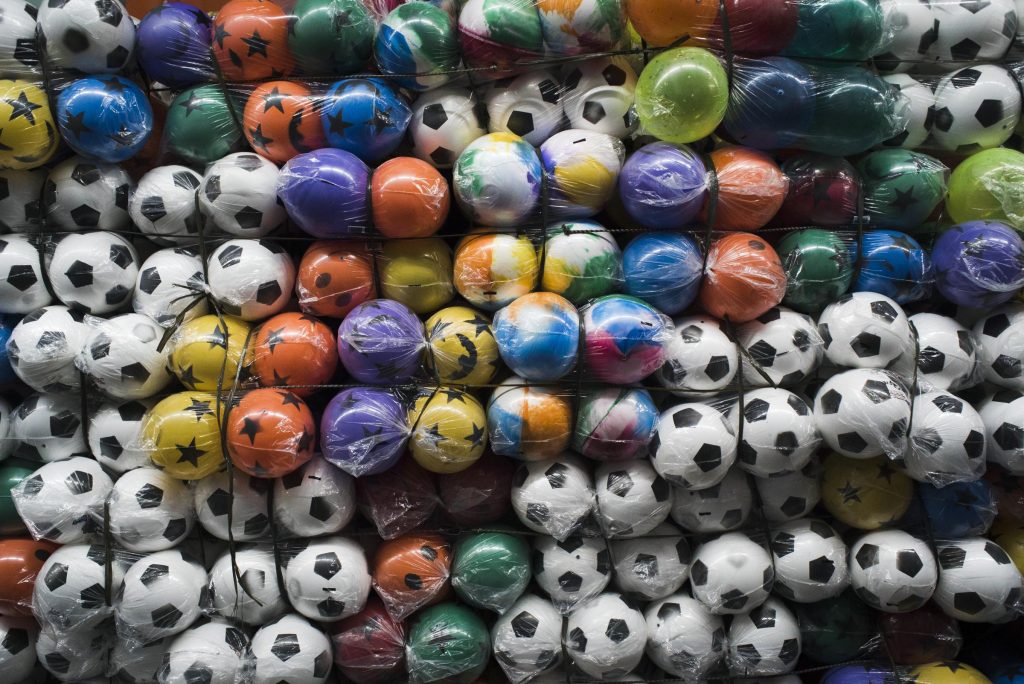
The assembly requires the development of a technique, without renouncing affection.
Thiago Oliveira, 2015.
The assembly technique is a family apprenticeship, in most cases through the maternal line.
Thiago Oliveira, 2015, Vaz Lobo.
At home, families usually organize themselves in an assembly line: candies are taken out of the packages and placed on the table, and each person is in charge of putting one or more types in a bag, which is passed from hand to hand until it reaches the person in charge of closing it with a stapler or a ribbon. Ideally, each bag should have the same amount and type of candy as the others, so that no child is harmed. And the saints are watching! But the bags can't be assembled too far in advance because the candy can melt. Once the bags are filled and closed, it's time to separate the ones that will go to the neighbor, the nephew, the work friend's daughter. There are people who have been giving for decades, there are those who are starting now, to greet the arrival of a baby, and there are those who continue practices inherited from their ancestors.
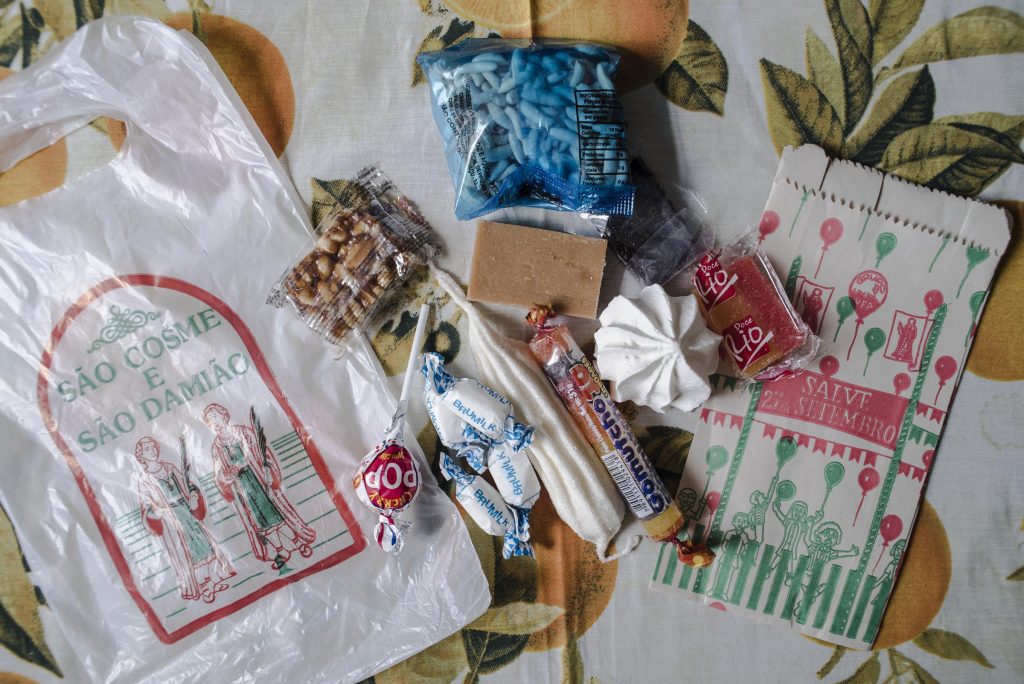
Far beyond the candy, Cosme y Damián's bags also contain promises, family traditions and childhood memories.
Thiago Oliveira, 2015.
The sachet with the effigy of the twin saints is considered the most traditional, whether it is made of paper or plastic.
Lucas Bártolo, 2016.

For many, the saints also participate in the celebration, eating the sweets. Cocadas, suspiros, pumpkin candies, etc. are also offered. Many Cosme y Damián altars contain candies and soft drinks as offerings.
As they are associated with the orixás twins, Cosmas and Damian also eat the food of the gods. In addition to sweets, the saints eat caruru, omolocum, acarajé and chicken. At home or in the terreiros.

Offerings to Cosmas, Damian and Doum in a religious articles store.
Thiago Oliveira, 2015.
Offerings to the saints in the Roman Catholic Church
Renata Menezes, 2012.


Offerings to the saints e orixás in a terreiro
Lucas Bártolo, 2016, Cavalcanti.
The big day is approaching. Tickets and invitations are distributed to avoid crowds and alternate distribution in the neighborhood. Information about the houses that distribute the bags of candy circulates among the children, who begin to draw an affective (and sweet) map of the city.
In groups, led by the eldest or even by an adult, the children leave home early and spend the day roaming the streets, running after candy. The party draws an affective map of the city, delimited by strong or weak candy places, near or far from home, where there are good or bad bags. The bags are distributed at doorways, in squares, in churches and shrines, in schools, daycare centers and orphanages, on foot or by car. Families gather to drink and give sweets. Some like to celebrate the day as if it were the birthday of the twin saints, opening the house and arranging a table with cake, guarana, blancmange and sweets. In small bags or on the tables, the sweets are, on the 27th, food for the saints and the children. The day of Cosme and Damian is a playful experience of the city.
Running after candy: a playful experience of the city
Correio da Manhã/Arquivo Nacional, September 1971.
Thiago Oliveira, 2015.
Early in the morning, the sound of the first sneakers crunching as they race through the streets heralds the start of another day on September 27. It is an extraordinary occasion when the children take on an autonomy that they will probably only really have when they are no longer children. In groups, led by the eldest or even by an adult, the children leave home early in the morning and spend the day running through the streets, or rather, running after candy.
In several neighborhoods of the city, we find patterns of grouping that can be compared to old photos, like the one we see below. There is a pattern that seems to repeat itself, in a movement of children through the streets of the city that sets adults and children in motion.
The party as a moment of anonymous and generous (and sweet) exchange with the unknown.
Isabela Pillar, 2013.
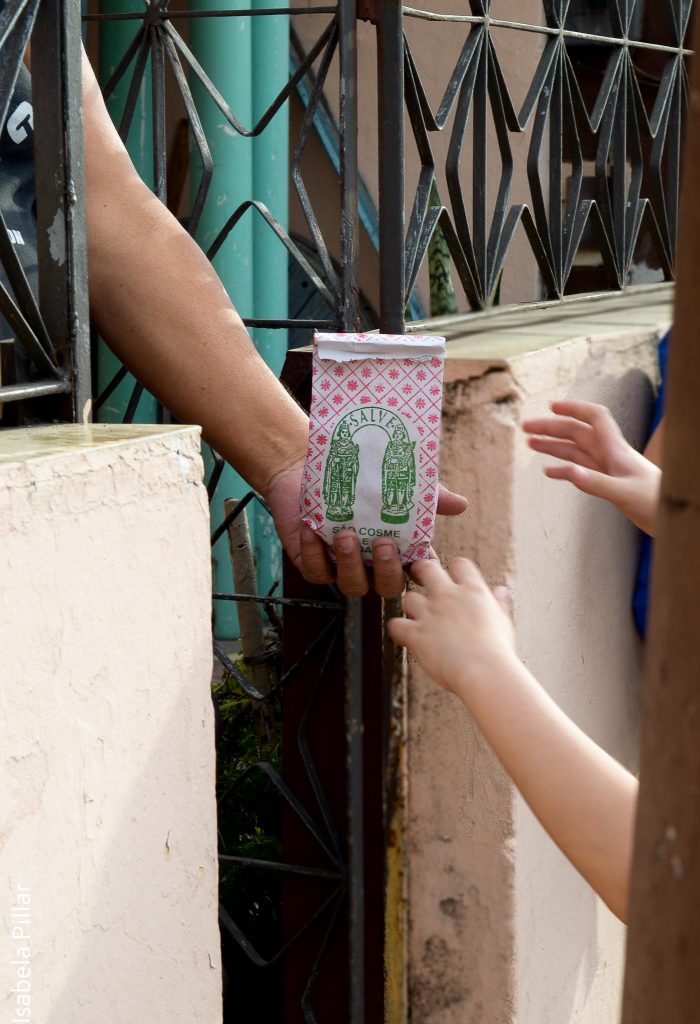
"I will give the candies at the door to the street children." This is how many devotees answer us when we ask them how they are going to make their feast. Cosme and Damien Day puts the focus on the relationship between the home and the street and puts its boundaries in suspense. It is a moment of anonymous and generous exchange with the unknown.
Among the various ways of giving sweets, the most widespread is the distribution through the door of houses and buildings. The devotees try to organize a queue, giving preference to lap children and pregnant women, but, in general, there is a small commotion in front of the houses. Another very popular modality is that of "throwing the candies forward", throwing them over the wall to the small crowd. Some donors stand out precisely for this practice, throwing not only candy, but also toys and money.
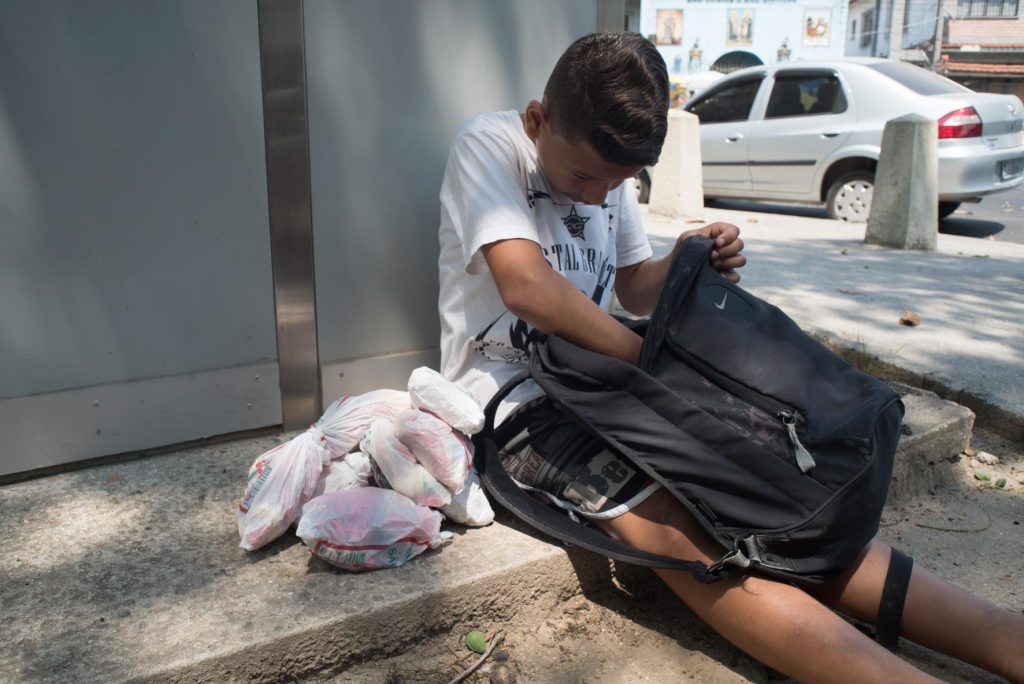
Recap of the day's achievements
Thiago Oliveira, 2015.
Lying about their age, not being recognized when they try to get two bags in the same house, knowing where the best bags are, asking for candy in the name of a supposed younger sibling... these are tricks that children use to get the most candy. It's part of the game to get the adults to bend, who warn: It's a bag for everyone! I only give candy to little kids! Anyone who goes out with anyone is no longer a child.
The festival is a playful and religious tradition that consists of a great game
Lucas Bártolo, 2014.
The smiles of the children are, for some, the great reward of the party..
Thiago Oliveira, 2015.
Isabela Pillar, 2013.
The smile of the children is, for some, the great reward of the party - if we wanted to talk about the possible interests of giving candy, it would certainly appear as the main desired retribution for the act of giving. But children are not just guests at the party: multiple, diverse, also make it. If with adults children learn to be grateful for the bags earned and also to distribute them, it is in the company of friends that they develop the tricks to take candies, especially to take them more than once in the same house.
Some people like to celebrate the day as if it were the birthday of the saints, opening the house and organizing a table with cake, guarana, manjar, sweets and many colorful balls. The delicacies can only be offered to the guests after singing happy birthday to Cosme and Damien and serving the seven children gathered around the cake. At these tables, the presence of twins is considered a blessing. From the sequence of photos, it can be seen that many families have been doing this practice for decades.
A domestic celebration to Cosme and Damian
Personal collection of Glória Amaral, 1990 (estimated date).

The birthday of the saints
Lucas Bártolo, 2014.
Thiago Oliveira, 2015.
Novenas, masses, baptisms and processions mark the program of the churches of the different branches of Catholicism (Roman, Orthodox, Coptic) that receive thousands of devotees on September 27, who also distribute candies, toys and food to children and needy people. Many religious traditions have the practice of charity and help as fundamental values and on the day of Cosmas and Damian, the donations made in these spaces are a way of putting these values into practice.
Donation of toys and food at St. George, St. Cosmas and St. Damian's Orthodox Catholic Church
Thiago Oliveira, 2015.
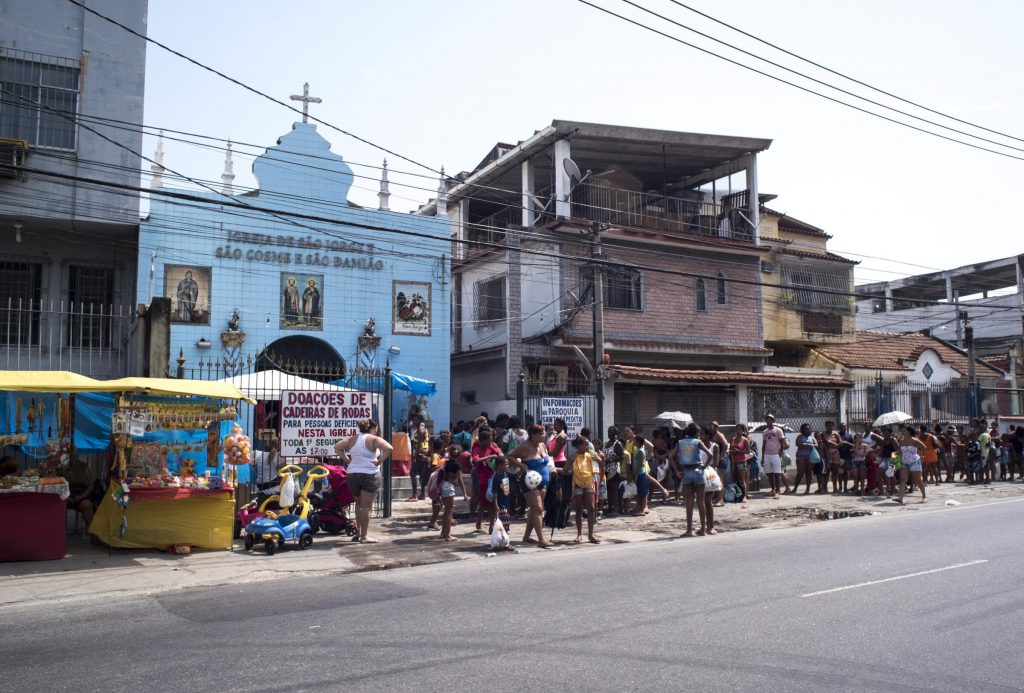
Multiform characters, Cosimo and Damian can be presented as Catholic martyrs, physicians, twins, orixás African, child protectors or child entities, among other conceptions about them that also appear combined. They are present in many pantheons, assuming specificities in each of these contexts.
In Brazil, the devotion to the saints was associated with African traditions of twin worship, highlighting the hybridization with the Ibejis, orixás children protectors of twins in the Yoruba tradition. It is from the approach of Cosimo and Damian to Ibeji that their functions were redefined: from protectors of doctors and pharmacists to protectors of children, of double births and of the health of twins. In the Brazilian religious universe, saints were linked to childhood, hence the distribution of sweets to children as a way of celebrating them.
In Catholic churches, the saints may be young or adult, identical or different twins.
Thiago Oliveira, 2015.
Ana Ranna, 2013.
The saints are now three. Idowú, younger brother of the Yoruba twins Ibeji, here in Brazil is Doum, brother of Cosme and Damián.
Thiago Oliveira, 2015
Ibejis, the orixás ninõs of the Yoruba tradition, protectors of ninõs and twins.
Lucas Bártolo, 2015.
The saints are now three. Idowú, younger brother of the Yoruba twins Ibeji, here in Brazil is Doum, brother of Cosme and Damián.
Thiago Oliveira, 2015

The sacred sweetness of the Children
Morena Freitas, 2016.
The sacred sweetness of the saints, of the ibejadas and of the children is venerated with sighs, cocadas, candies, cakes and guaraná. This sweetness smells, sounds, colors, melts our hands, invades our noses and mouths; and to feel this sweetness is to feel the Children.
Devotion to the saints implies an intense communication that goes through looks, gestures, words and things and involves affection, emotions and desires. Devotion unfolds, therefore, far beyond the bags of candy..
Lucas Bártolo, 2019.
Thiago Oliveira, 2015
The multiple forms that this devotion assumes express the Brazilian cultural diversity. Cosme and Damian in the literature of cordel and carnival.
Thiago Oliveira, 2015.
Lucas Bártolo, 2015.












